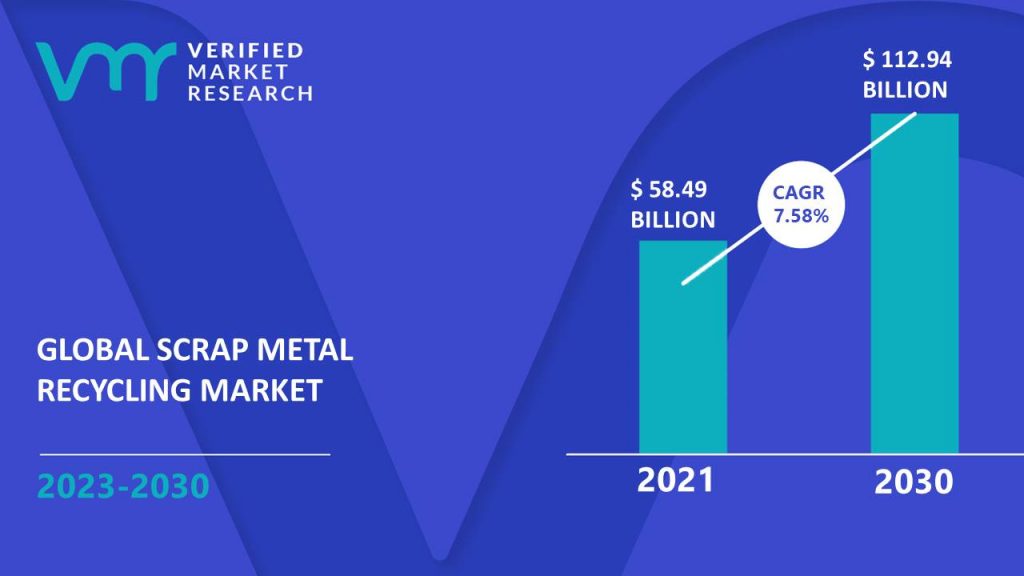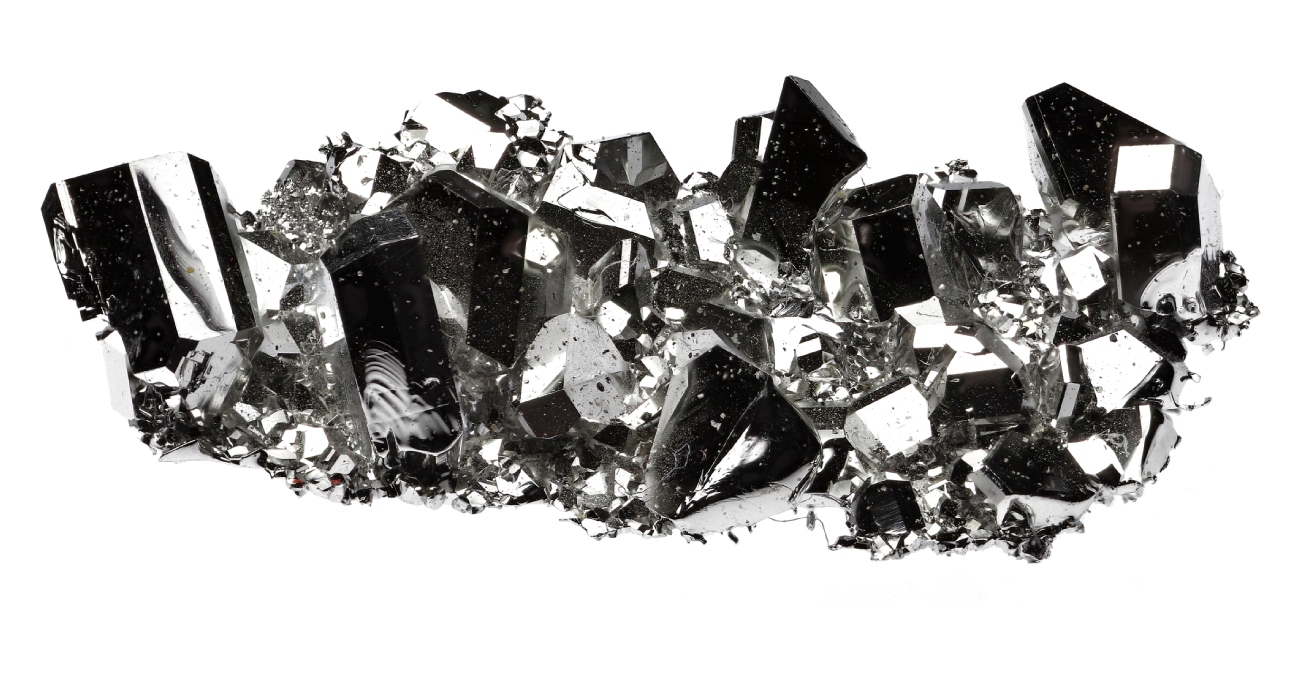Scrap Metal Recycling Expected To Grow By 7.58% to 2030

Date

Source: www.VerifiedMarketResearch.com
The scrap metal recycling market has emerged as a major player in the global economy, steadily gaining momentum and witnessing exponential growth. According to Verified Market Research, the “Scrap Metal Recycling Market size was valued at USD 58.49 Billion in 2021 and is projected to reach USD 112.94 Billion by 2030, growing at a CAGR of 7.58 % from 2023 to 2030“. This remarkable expansion is attributed to the industry’s commitment to sustainability, technological advancements, and the increasing demand for recycled materials.
Market Dynamics
The scrap metal recycling market’s healthy growth is supported by a compound annual growth rate (CAGR) of 7.58% projected from 2023 to 2030. A CAGR is “one of the most accurate ways to calculate and determine returns for anything that can rise or fall in value over time“. This projected growth rate can be attributed to several key factors driving the industry forward.
Environmental Awareness and Sustainability
The global emphasis on environmental conservation and sustainable practices has led to an increased demand for scrap metal recycling. Governments, businesses, and consumers alike are recognizing the importance of reducing carbon footprints and conserving natural resources, creating a significant impetus for the recycling industry.
Regulatory Initiatives
Strict environmental regulations and policies worldwide are compelling industries to adopt eco-friendly practices. Scrap metal recycling aligns perfectly with these mandates, making it an attractive option for businesses seeking to comply with regulations while contributing to a greener planet.
Technological Advancements
Innovations in recycling technologies have significantly improved the efficiency and cost-effectiveness of scrap metal recycling processes. Automation, machine learning, and advanced sorting techniques have streamlined operations, making recycling more accessible and economically viable.
Increasing Demand for Recycled Materials
The growing awareness of the finite nature of natural resources and the adverse environmental impacts of extracting raw materials has led to an upsurge in demand for recycled materials. Industries are increasingly turning to recycled metals, not only for environmental reasons but also for economic benefits.
Market Segmentation
The scrap metal recycling market can be segmented based on metal type, end-use industry, and region. Commonly recycled metals include ferrous metals (iron and steel) and non-ferrous metals (aluminum, copper, lead, and others). End-use industries span automotive, construction, packaging, electronics, and more.
Ferrous Metals Dominance
Ferrous metals, primarily iron and steel, account for a significant share of the market due to their widespread use in construction and manufacturing. The durability and recyclability of ferrous metals make them a preferred choice for many industries.
Non-Ferrous Metals Growth
The demand for non-ferrous metals, such as aluminum and copper, is steadily increasing. These metals offer lightweight and corrosion-resistant properties, making them crucial in industries like automotive and electronics.
Geographical Trends
The market’s growth is not uniform across regions. Developed economies with strict environmental regulations and a focus on sustainability, such as North America and Europe, are witnessing substantial growth. Meanwhile, emerging economies in Asia-Pacific are catching up, driven by industrialization and increasing environmental awareness.
As we look toward the future, the scrap metal recycling market appears poised for continued growth. The industry’s role in fostering a circular economy and reducing reliance on virgin materials is prominent. With ongoing technological advancements, supportive regulatory frameworks, and a growing global commitment to sustainability, the market is likely to exceed expectations and contribute significantly to a more sustainable and eco-friendly future. The projected CAGR of 7.58% from 2023 to 2030 highlights the resilience and potential of the scrap metal recycling industry on its path to becoming a cornerstone of the global circular economy.



